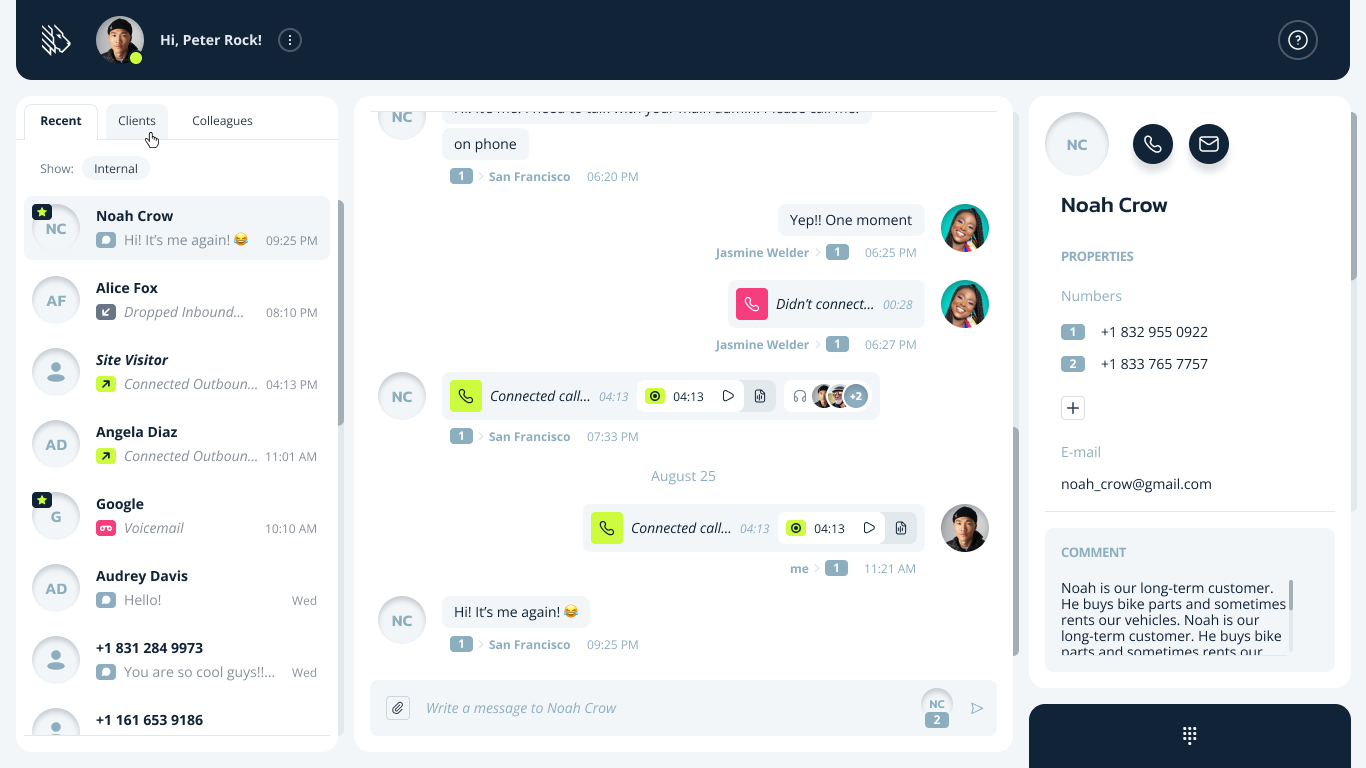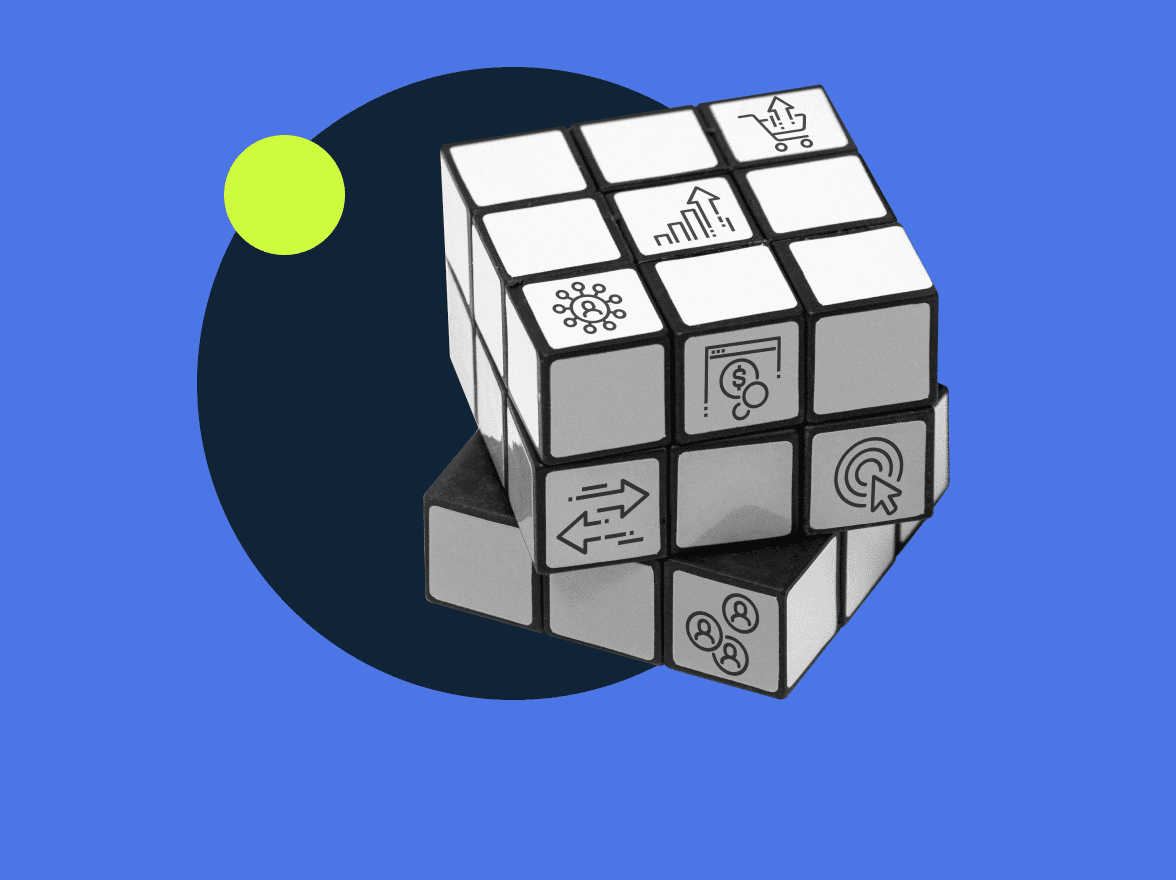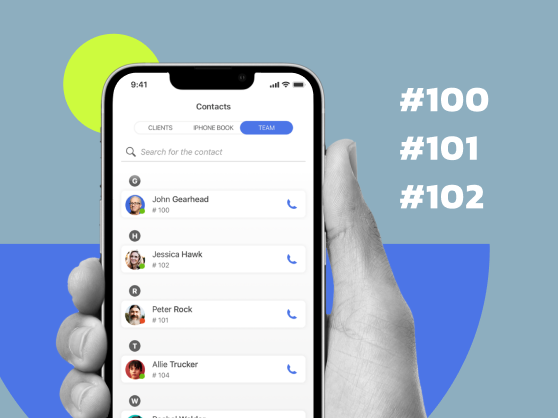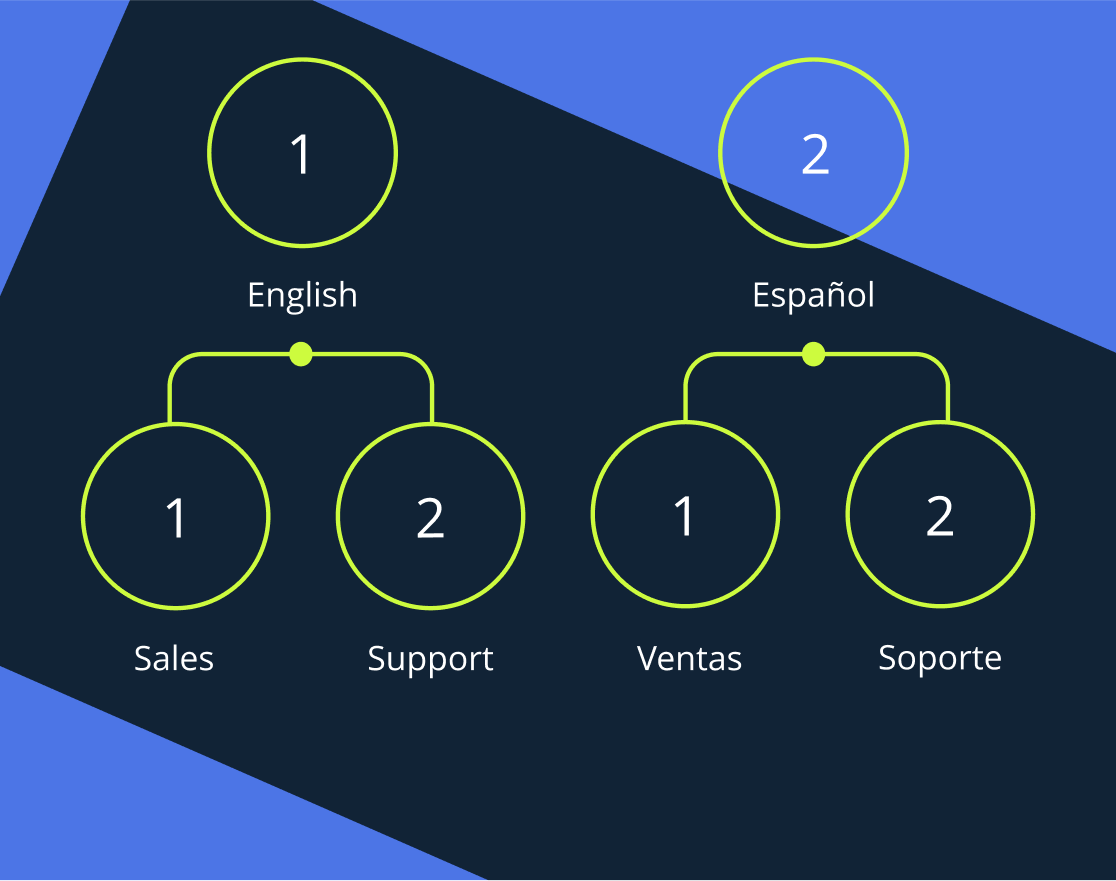Customer-centric business models are conquering more offices by the day, and the efficiency of call center operations is crucial. A well-managed call center not only ensures seamless customer interactions but also acts as a vital touchpoint in a brand’s reputation-building process. Equipped with the right strategies and tools, it can significantly boost customer satisfaction, loyalty, and business growth. This guide delves deep into the nuances of call center management, offering insights, best practices, and actionable strategies to transform your call center into a powerhouse of effective communication and customer delight. Dive in to unlock the potential of optimized operations.
In this article we cover:
- What is call center management?;
- How does a call center work?;
- Call center roles and duties;
- Why is it important to manage a call center strategically?;
- How can MightyCall help with call center management?;
- Call center management problems and how to solve them;
- Best practices for effective call center management;
- Vital metrics to track for successful call center operations;
- Elevate your business through streamlined call center operations.
What is call center management?
Contact center management encompasses the strategic coordination and oversight of a facility dedicated to handling customer interactions. This includes attending to inquiries, managing complaints, or processing support requests. More than just supervising calls, it involves guiding and training personnel, optimizing operational processes for efficiency, rigorously analyzing performance metrics, implementing advanced technological tools, and ensuring the consistent delivery of top-notch customer service. It’s a delicate balance of administrative strategy and human resource development, all geared towards elevating customer satisfaction.
How does a call center work?
A call center is fundamentally a nexus of technology and human interaction, devised to enhance the relationship between businesses and their clientele. The journey typically starts with routing, wherein advanced technological systems sift through incoming calls or messages, channeling them to the ap test available agent. These agents, fortified with scripts and expansive databases, harness the power of CRM software to retrieve intricate client histories.
To ensure consistent service excellence, quality assurance mechanisms are employed. This might involve following the correct call center management tips and supervisors or specialized teams meticulously scrutinizing calls and interactions. Furthermore, to continually refine and adapt, feedback mechanisms are embedded, collating invaluable data to spotlight and rectify potential inadequacies. Call center agents training sessions are frequently held, keeping the agents updated with the latest product knowledge and soft skills. This intricate web of processes and systems, working synergistically, seeks not just to address customer queries but to transcend their expectations and manage call center agents, solidifying brand affinity and trust.
Call center roles and duties
Call center manager
In their senior role, managers oversee the entirety of operations. Their broad scope requires them to understand how to manage a call center and be attuned to both the big picture and the minute details.
- Strategic oversight. Develops and implements call center management strategic plans to improve productivity and customer satisfaction while continuously innovating to stay ahead of industry trends.
- Team leadership. Guides supervisors, fosters team cohesion, and ensures they have the necessary resources and tools.
- Budget management. Allocates funds judiciously to different departments, ensuring cost-effectiveness and ROI maximization. They also forecast financial needs and potential challenges.
Call center supervisor
They act as a bridge between the call center managers and the agents, ensuring daily tasks align with strategic goals and harmonizing the workflow.
- Performance monitoring. Reviews call recordings and metrics, always staying attuned to assess agent performance and potential bottlenecks.
- Feedback and training. Provides constructive feedback, organizes training sessions, and ensures the continuous professional development of agents.
- Conflict resolution. Addresses any issues between agents or with clients proactively, maintaining a conducive and positive working environment, and ensuring smooth contact center operations.
Call center agent
On the frontlines of the contact center, these individuals directly interact with customers, representing the brand’s voice and values.
- Customer Interaction. Addresses inquiries, complaints, or support requests from clients, always aiming to exceed expectations
- Data Input. Diligently updates customer information and logs interactions in CRM systems, ensuring data accuracy.
- Collaboration. Works closely with teammates, sharing knowledge and ensuring consistent and quality customer service, fostering a seamless customer experience and sometimes managing call center operations.

Why is it important to manage a call center strategically?
Data-driven decisions
Efficient process management integrates actionable insights from data analytics, allowing for more informed and precise decisions that can significantly impact the call center’s outcomes. Relying on data ensures that call center management strategies are not based on gut feelings but on objective, quantifiable information.
Reduced operational costs
An efficiently managed contact center can significantly bring down overall costs. This includes reducing the waste of resources, optimizing agent idle times, and streamlining processes to minimize overheads. Cost savings aren’t just about cutting corners; they’re about maximizing the utility of every penny spent.
Improved brand reputation
A single negative review can echo across platforms. Efficiently managing a call center helps address customer concerns proactively, thereby preserving and enhancing a brand’s reputation. A good experience can lead to positive word-of-mouth, boosting brand trustworthiness.
Agility in operations
The dynamics of customer service are continuously evolving. Running a call center needs to ensure agility and quick adaptation to changes, whether it’s a sudden spike in call volume or integrating new technology. Being agile not only reduces downtime but also ensures that you run the call center successfully and it is always at the forefront of delivering optimal service.
Enhanced security
Call centers often deal with sensitive customer data. Efficient management implies strong security protocols to protect this data. From ensuring that the technology used is secure to training agents and managers on call center management best practices, it minimizes the risks of breaches, ensuring customer trust is maintained.
How can MightyCall help with call center management?
MightyCall is a comprehensive solution designed to elevate the efficiency and effectiveness of operations of a call center.
- Intuitive call routing: With MightyCall’s dynamic routing system, there’s no more waiting. Customers are swiftly connected to the right agent, reducing wait times and increasing satisfaction.
- In-depth analytics: Get a bird’s-eye view of your operations. MightyCall’s analytics delve deep into call trends, agent performance metrics, and more, ensuring call center managers have all the data they need to make informed decisions.
- Enhanced communication tools: Features like voicemail-to-text and call recording are a successful call center strategy. They not only streamline communication but also serve as crucial tools for training and quality assurance.
- Customizable virtual receptionist: First impressions matter—this is the greatest tip for call center managers. With MightyCall’s virtual receptionist, every call starts on the right note, embodying professionalism and brand consistency.
- Training opportunities: Use recorded calls as learning materials when you manage a call center team. Pinpoint areas for improvement and celebrate exemplary customer service instances to set standards.
- Brand image enhancement: Reinforce your brand’s image of reliability and commitment to excellence, creating lasting positive impressions with every interaction in a contact center.
Call center management problems and how to solve them
High attrition rates
Agent turnover in call centers not only disrupts work but also significantly inflates recruitment and training costs. A high attrition rate indicates deeper organizational call center management challenges that can directly impact the customer experience. Maintaining a stable and experienced team is essential for achieving consistency in service quality and enhancing the overall brand reputation.
Why it happens:
- Stressful work environment: Handling difficult customers and high call volumes continuously can lead to burnout, causing agents to seek less stressful positions elsewhere in a different well-operated call center.
- Lack of growth opportunities: If agents feel their role lacks career progression or skill development opportunities, they may feel stifled and unmotivated.
- Inadequate compensation: Agents might move to competitors offering better salaries and benefits, especially if they feel their efforts are undervalued.
How to solve
- Offer competitive salaries and benefits: Recognize and reward your team’s hard work, ensuring they feel valued and appreciated in the contact center.
- Focus on professional development: Invest in continuous training and upskilling programs, allowing agents to grow and adapt to changing industry needs.
- Cultivate a positive work culture: Create an environment that prioritizes teamwork, employee well-being, recognition, and a good work-life balance.
Low customer satisfaction
Achieving high customer satisfaction is the lifeline of call centers and the best call center management experience. When customers feel undervalued or unheard, they not only switch their brand loyalty but also share their negative experiences, potentially harming the company’s image.
Why it happens:
- Long wait times: Prolonged waiting can frustrate customers, making them question the company’s efficiency.
- Incompetent agents: Encountering agents who lack the necessary knowledge or skill set can erode trust in the brand.
- Lack of problem resolution: Failure to address and resolve a customer’s issue during the initial interaction can lead to dissatisfaction with the contact center and a feeling of neglect.
How to solve:
- Provide comprehensive training: Equip agents with the necessary knowledge and tools to handle customer queries effectively.
- Establish efficient call routing: Utilize advanced technologies to swiftly connect customers with the most suitable agent.
- Collect continuous feedback: Establish mechanisms like surveys and reviews to understand customer sentiments and act on areas needing improvement in your call center strategy.
Inefficient resource utilization
Resource mismanagement in a call center doesn’t just lead to inflated operational costs; it also compromises service quality. Effective resource management ensures optimal performance, cost efficiency, and high service levels.
Why it happens:
- Misallocation of tasks: Assining tasks without considering agent expertise or strengths can hinder performance.
- Overstaffing or understaffing: Inaccurate staffing predictions can lead to unnecessary expenses or overwhelmed agents and call center managers.
- Technology gaps: Relying on outdated or non-integrated systems can cause operational bottlenecks and inefficiencies.
How to solve:
- Implement workforce optimization: Employ advanced tools to predict staffing needs based on historical call volumes and trends.
- Introduce skill-based task allocation: Match tasks to agents based on their strengths, experience, and expertise to boost efficiency.
- Get timely technological upgrades: Regularly update contact center systems and software, integrating the latest tools that streamline operations and improve service delivery.
Lack of quality assurance
Consistent high-quality service delivery is paramount in the call center operations industry. Without stringent quality assurance mechanisms, there can be a gradual decline in service standards, affecting customer trust and loyalty.
Why it happens:
- Infrequent training: Agents and managers may be unaware of new products, services, or protocols, leading to misinformation.
- Absence of performance metrics: Without KPIs, there’s no benchmark to gauge performance, leading to undetected inefficiencies.
- Missing feedback loops: Without systematic feedback, continuous improvement initiatives remain baseless and ineffective.
How to solve:
- Schedule periodic training: Conduct regular training sessions to ensure agents are updated with the latest information and skills.
- Implement KPIs: Establish and monitor key performance metrics that reflect both agent and call center performance.
- Bring forth feedback-driven improvements: Leverage customer and agent feedback to identify gaps and areas requiring attention and refinement.
Tech integration challenges
Keeping pace with the ever-evolving technological landscape is non-negotiable for modern call centers. Outdated or mismatched systems can introduce inefficiencies, compromise data integrity, and degrade the overall customer experience.
Why it happens:
- Financial constraints: The initial investment required for cutting-edge systems may be seen as prohibitive.
- Reluctance to adapt: Some centers may delay or resist technological upgrades due to apprehension about costs, potential disruptions, or change management challenges.
- Staff inertia: Existing employees may resist migrating to new platforms due to familiarity and comfort with older systems.
How to solve:
- Hold frequent tech assessments: Carry out regular technology audits, ensuring systems are current, compatible, and meet operational needs.
- Train and support: Whenever new systems are introduced, ensure comprehensive training sessions are provided by your call center administration, easing the transition for staff.
- Embrace user-centric solutions: Opt for platforms that prioritize user experience and functionality, like MightyCall, ensuring a smoother integration and adoption process.
Best practices for effective call center management
Effective management is a delicate balance between people, processes, and technology. Implementing best practices can make a world of difference in productivity, efficiency, and customer satisfaction. Here are ten practices to consider:
1. Regular training and upskilling
Ensure that your agents receive continuous training to keep them updated with the latest product knowledge, technology tools, and soft skills. A well-trained agent is more likely to handle calls competently and improve the overall customer experience.
2. Implement performance metrics
Utilize Key Performance Indicators (KPIs) to monitor and evaluate agent performance. Common metrics include Average Handle Time (AHT), First Call Resolution (FCR), and Customer Satisfaction (CSAT). By understanding these metrics, call center managers can identify areas for improvement and ensure consistency in service quality.
3. Adopt advanced technology tools
From CRM systems to AI-driven chatbots, leverage technology to automate mundane tasks, offer multi-channel support, and provide agents with a 360-degree view of the customer, enhancing the quality and speed of service.
4. Encourage open communication
Foster an environment where agents can freely communicate their concerns, suggestions, or feedback. Regular team meetings, feedback sessions, and one-on-one discussions can offer invaluable insights into improving operations.
5. Focus on employee well-being
A happy employee tends to be more productive and customer-centric. Offering competitive compensation, flexible work schedules, and creating a positive work environment can go a long way toward reducing attrition and improving performance.
6. Embrace workforce management tools
These tools can help in forecasting call volumes, scheduling shifts, and ensuring that the call center is neither understaffed nor overstaffed. Efficient workforce management contributes to reduced wait times and better customer service.
7. Set clear expectations
Clearly define roles, responsibilities, and targets for every agent. When employees know what’s expected of them, they’re more likely to perform to the best of their abilities.
8. Foster a customer-centric culture
Every decision and strategy should prioritize the customer. Regularly collecting feedback, understanding pain points, and making necessary adjustments will ensure that the call center consistently meets and exceeds customer expectations.
9. Use data for strategic decisions
Call centers generate a wealth of data every day. Analyzing this data can provide insights into customer behavior, preferences, and common issues. Utilizing these insights can guide strategy, tailor training programs, and improve overall operations.
10. Continuous process improvement
The call center industry is dynamic. It’s essential to remain agile and open to changes. Regularly review and update processes, be open to new technologies, and adapt to the ever-evolving customer service landscape.
Vital metrics to track for successful call center operations
1. First Call Resolution (FCR)
FCR is a foundational call center metric, assessing both agent efficiency and the customer experience. By analyzing the percentage of calls conclusively addressed during the initial interaction, without necessitating further follow-ups, it offers insights into the effectiveness of agent training and the depth of their knowledge. A commendable FCR typically corresponds with positive customer sentiments and cost-efficiencies, making it a primary focal point for operations striving for effective call center management.
FCR = (Resolved Incidents on First Contact / Total Incidents) × 100%
2. Average Handle Time (AHT)
AHT grants insights into both agent efficiency and the potential for customer frustration. By measuring the cumulative time an agent dedicates to each call, including talk durations and subsequent administrative tasks, it becomes a barometer for process efficiency. An optimal AHT, which neither rushes nor prolongs interactions unduly, is achieved through periodic training and refined operational guidelines.
AHT = (Total Talk Time + Total Hold Time + Total Wrap Time) / Number of Calls Handled
3. Net Promoter Score (NPS)
NPS stands as an important indicator for measuring the overall customer experience and potential for future referrals. Mastering this call center operations indicator is pivotal. By soliciting feedback on customers’ likelihood to recommend the company, NPS becomes a reflection of service quality, product satisfaction, and overall company reputation. Continuously aiming for a higher NPS drives forward-thinking strategies and customer-centric initiatives.
NPS = Percentage of Promoters – Percentage of Detractors
4. Abandonment Rate
Highlighting potential operational bottlenecks, the Call Abandonment Rate is a direct measure of customer patience and system efficiency. When callers hang up before interacting with an agent, it could suggest issues like extended wait times or technical hiccups. A meticulous review of factors contributing to a high abandonment rate is imperative for enhancing customer retention and loyalty and implementing effective call center management.
Abandonment Rate = (Number of abandoned calls / Total incoming calls) x 100%
5. Occupancy Rate
This metric paints a vivid picture of agent activity versus downtime. By analyzing the balance between active call handling and idle durations, it offers a snapshot of resource utilization and workload distribution. Striving for an ideal occupancy rate ensures agents remain energetically engaged without facing burnout, promoting both efficiency and job satisfaction for your call center management.
Occupancy Rate = (Total call handle time / Total logged-in time) x 100%
6. Service Level
Service level acts as a performance yardstick for call center responsiveness when you manage a call center. By quantifying the fraction of calls addressed within stipulated benchmarks, it underscores the center’s ability to provide timely assistance. A steadfast commitment to maintaining or surpassing the desired service level solidifies a brand’s reputation for being customer-centric and reliable.
Service Level = (Number of calls answered within threshold / Total number of calls) x 100%
7. Customer Satisfaction (CSAT)
As an immediate pulse-check on customer sentiment, CSAT delves into reactions post-interaction. Through succinct feedback forms or surveys, CSAT offers an unfiltered view of how interactions align with customer expectations. Consistent high scores in this metric amplify the importance of cultivating positive customer experiences and fostering long-lasting relationships for your contact center management strategy.
CSAT = (Number of positive responses / Total number of responses) x 100%
8. Agent Attrition Rate
A critical call center metric of workplace culture, job satisfaction, and operational stability, this metric casts a light on challenges that may not always be visible upfront. By meticulously tracking the turnover of agents within specified periods, it can reveal deeper concerns around compensation structures, avenues for professional growth, training adequacy, team dynamics, and even the broader organizational culture. Furthermore, understanding attrition can help in assessing the long-term viability of the call center’s operational strategies and contact center management. Addressing the root causes of high attrition is essential, not only to maintain operational consistency but also to ensure a motivated, loyal, and productive workforce. A holistic approach to reducing attrition fosters a more cohesive and efficient work environment.
Agent Attrition Rate = (Number of agents who left / Total number of agents at the start of the period) x 100%
Call center metrics for reporting and analytics
Enhance your contact center’s performance by using MightyCall’s metrics.
Elevate your business through streamlined call center operations
By tracking vital metrics, understanding roles and responsibilities, and adhering to best call center management practices, businesses can ensure optimal efficiency and enhanced customer satisfaction. Call centers aren’t just about handling calls; they’re about building lasting relationships and driving business growth. Embracing effective call center management tools, like MightyCall, can further amplify these results. Taking the step to invest in your center can be the differentiator your business needs to stand out and flourish.




























